History
The regiment was organized during the summer of 1861 by James A. Tait, who served as the unit’s first colonel. After serving in garrison duties in the defenses of Washington, D.C., the regiment was sent to the Shenandoah Valley in May 1862, although it did not see any combat during the 1862 Valley Campaign. When Union forces in the Shenandoah region were consolidated into the Army of Virginia, the 1st D.C. Infantry became part of the 2nd Division, II Corps. As part of the army, it fought in the Battle of Cedar Mountain and served in reserve at the Second Battle of Bull Run. Following the campaign, the regiment was reassigned to the defenses of Washington, where it served for the remainder of the war. At first, it was part of the XII Corps of the Army of the Potomac, but was transferred to the Department of Washington.
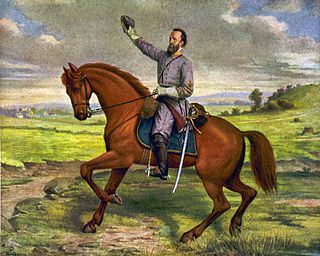
Jackson's Valley Campaign, also known as the Shenandoah Valley Campaign of 1862, was Confederate Maj. Gen. Thomas J. "Stonewall" Jackson's spring 1862 campaign through the Shenandoah Valley in Virginia during the American Civil War. Employing audacity and rapid, unpredictable movements on interior lines, Jackson's 17,000 men marched 646 miles (1,040 km) in 48 days and won several minor battles as they successfully engaged three Union armies, preventing them from reinforcing the Union offensive against Richmond.
The Army of Virginia was organized as a major unit of the Union Army and operated briefly and unsuccessfully in 1862 in the American Civil War. It should not be confused with its principal opponent, the Confederate Army of Northern Virginia, commanded by Robert E. Lee.

There were five corps in the Union Army designated as II Corps during the American Civil War. These formations were the Army of the Cumberland II Corps commanded by Thomas L. Crittenden from October 24, 1862, to November 5, 1862, later renumbered XXI Corps; the Army of the Mississippi II corps led by William T. Sherman from January 4, 1863, to January 12, 1863, renumbered XV Corps; Army of the Ohio II Corps commanded by Thomas L. Crittenden from September 29, 1862, to October 24, 1862, transferred to Army of the Cumberland; Army of Virginia II Corps led by Nathaniel P. Banks from June 26, 1862, to September 4, 1862, and Alpheus S. Williams from September 4, 1862, to September 12, 1862, renumbered XII Corps; and the Army of the Potomac II Corps from March 13, 1862, to June 28, 1865.
During the Battle of Fort Stevens, the 1st District of Columbia helped defend the northern line of forts and entrenchments but failed to see any combat. On February 28, 1865, the regiment was consolidated with the 2nd District of Columbia Infantry.

The Battle of Fort Stevens was an American Civil War battle fought July 11–12, 1864, in Northwest Washington, D.C., as part of the Valley Campaigns of 1864 between forces under Confederate Lieutenant General Jubal Early and Union Major General Alexander McDowell McCook. Although Early caused consternation in the Union government, reinforcements under Maj. Gen. Horatio G. Wright and the strong defenses of Fort Stevens minimized the military threat and Early withdrew after two days of skirmishing without attempting any serious assaults. The battle is noted for the personal presence of President Abraham Lincoln observing the fighting.
This page is based on this
Wikipedia article Text is available under the
CC BY-SA 4.0 license; additional terms may apply.
Images, videos and audio are available under their respective licenses.

XXII Corps was a corps in the Union Army during the American Civil War. It was created on February 2, 1863, to consist of all troops garrisoned in Washington, D.C., and included three infantry divisions and one of cavalry. Many of its units were transferred to the Army of the Potomac during Grant's Overland Campaign.
The Stonewall Brigade of the Confederate Army during the American Civil War, was a famous combat unit in United States military history. It was trained and first led by General Thomas J. "Stonewall" Jackson, a professor from Virginia Military Institute (VMI). His severe training program and ascetic standards of military discipline turned enthusiastic but raw recruits into an effective military organization, which distinguished itself from the First Battle of Bull Run in 1861 to Spotsylvania Court House in 1864. Its legacy lives on in the 116th Infantry Brigade which bears the unofficial nickname "Stonewall Brigade".
The 1st Regiment, Rhode Island Cavalry was a cavalry regiment that participated in the American Civil War. They were badly routed at the Battle of Middleburg, a blemish on an otherwise competent combat record.
The 23rd Pennsylvania Volunteer Infantry was an infantry regiment that fought in the Union Army during the American Civil War. Known for its colorful uniforms based upon the popular French Zouave style, the regiment served in the Eastern Theater.
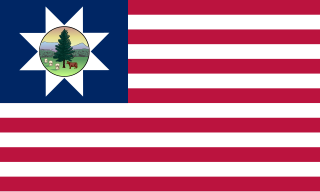
The 11th Regiment, Vermont Volunteer Infantry or simply known as 11th VVI was a three-years infantry regiment in the Union Army during the American Civil War. It served in eastern theater, from September 1862 to August 1865. It served in the XXII Corps in the defenses of Washington D.C., and with the Vermont Brigade in VI Corps. The regiment was mustered into United States service on September 1, 1862, at Brattleboro, Vermont. On December 10, 1862, its designation changed to the 1st Vermont Heavy Artillery.
The 116th Pennsylvania Infantry was a volunteer infantry regiment in the Union Army during the American Civil War. It formed a part of the Irish Brigade.
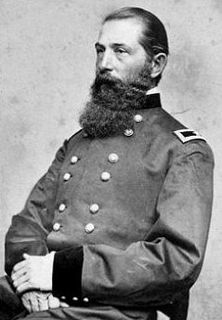
David Allen Russell was a career United States Army officer who served in the Mexican–American War and the American Civil War. He was killed in action as a brigadier general in the Union Army.
16th Indiana Battery Light Artillery was an artillery battery that served in the Union Army during the American Civil War.

The 13th Regiment Massachusetts Volunteer Infantry was an infantry regiment in the Union Army during the American Civil War. It was formed on July 16, 1861, at Fort Independence in Boston, Massachusetts. Its original commander was Colonel Samuel H. Leonard.
The 67th New York Infantry was a regiment of the Union Army, which was raised in Brooklyn in 1861 at the beginning of the American Civil War.
The 2nd District of Columbia Infantry was a Union Army infantry regiment that served during the American Civil War.
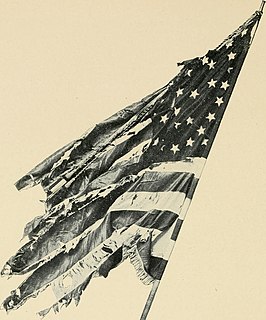
The 124th Pennsylvania Volunteer Infantry was an infantry regiment that served in the Union Army during the American Civil War.
The 103rd New York Volunteer Infantry was an infantry regiment in the Union Army during the American Civil War.
The 3rd Maryland Volunteer Infantry Regiment was an infantry regiment that served in the Union Army during the American Civil War.
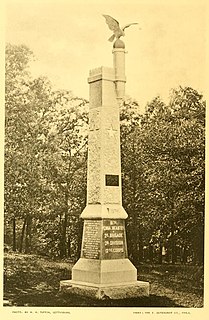
The 111th Pennsylvania Volunteer Infantry was an infantry regiment that served in the Union Army during the American Civil War.

William Henry Penrose was a United States Army officer who served in the Union Army during the American Civil War. Penrose commanded the First New Jersey Brigade and ended the war with the rank of brigadier general.
The 54th New York Volunteer Infantry was an infantry regiment in the Union Army during the American Civil War.
The 109th Pennsylvania Volunteer Infantry was an infantry regiment that served in the Union Army during the American Civil War.
The 153rd New York Volunteer Infantry was an infantry regiment in the Union Army during the American Civil War.
The 101st New York Volunteer Infantry was an infantry regiment in the Union Army during the American Civil War.











